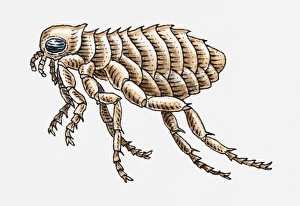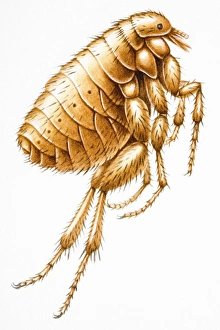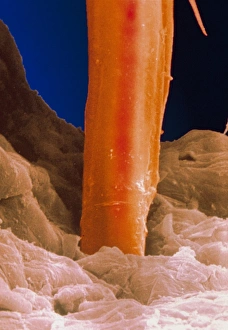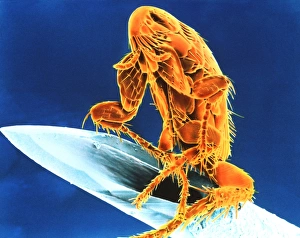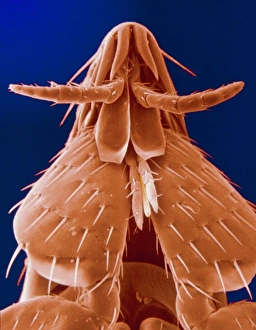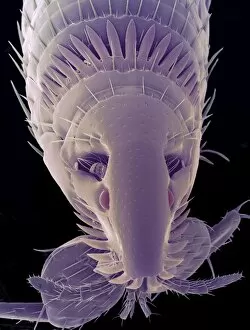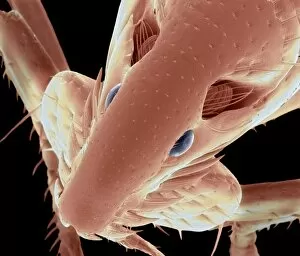Cat Flea Collection
The cat flea, scientifically known as Ctenocephalides felis, is a small wingless insect that can cause big problems for our feline friends
All Professionally Made to Order for Quick Shipping
The cat flea, scientifically known as Ctenocephalides felis, is a small wingless insect that can cause big problems for our feline friends. With its sharp stylet, the cat flea pierces through the skin of its host to feed on blood. This cross-section model of a cat flea's back leg reveals its intricate structure and showcases how it enables these pests to jump effortlessly from one host to another. In this captivating illustration, we get an up-close look at the head of a cat flea under scanning electron microscopy. The fine details are astonishing, highlighting the sensory organs and mouthparts that aid in their survival. These tiny creatures have adapted well to their environment and have become experts at infesting cats worldwide. A closer examination using SEM unveils even more fascinating features of this notorious parasite. From its body structure to its feeding apparatus, every aspect has evolved for maximum efficiency in finding hosts and extracting nourishment from them, and are not just a nuisance; they can transmit diseases and cause severe discomfort for our beloved pets, and is crucial for pet owners to take preventive measures such as regular grooming, using anti-flea products recommended by veterinarians, and maintaining clean living environments. This electron micrograph captures the moment when a cat flea's stylet penetrates into the skin of its unfortunate host. The precision with which it inserts itself is both impressive and alarming. Understanding these mechanisms helps researchers develop effective strategies to combat these pesky parasites. While we may marvel at their microscopic world through powerful imaging techniques like SEM, it is essential never to underestimate the impact these minuscule insects can have on our furry companions' health. Stay vigilant against fleas and protect your pets from these relentless invaders.

